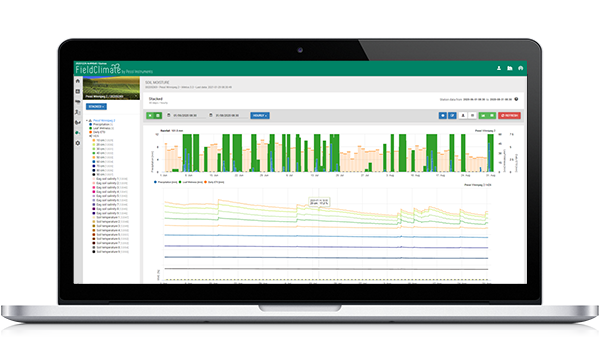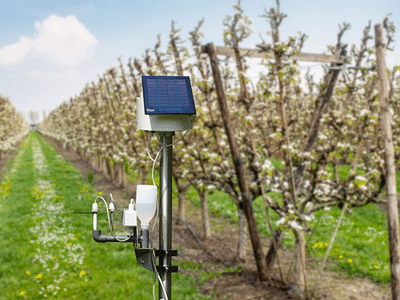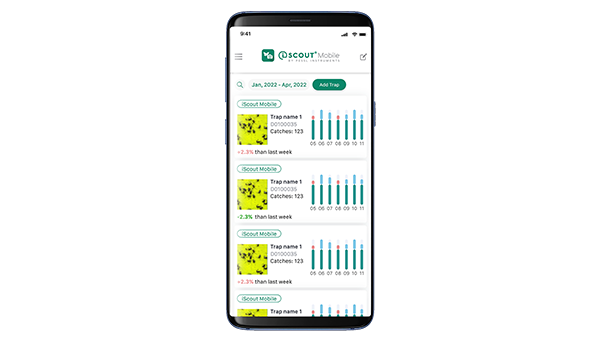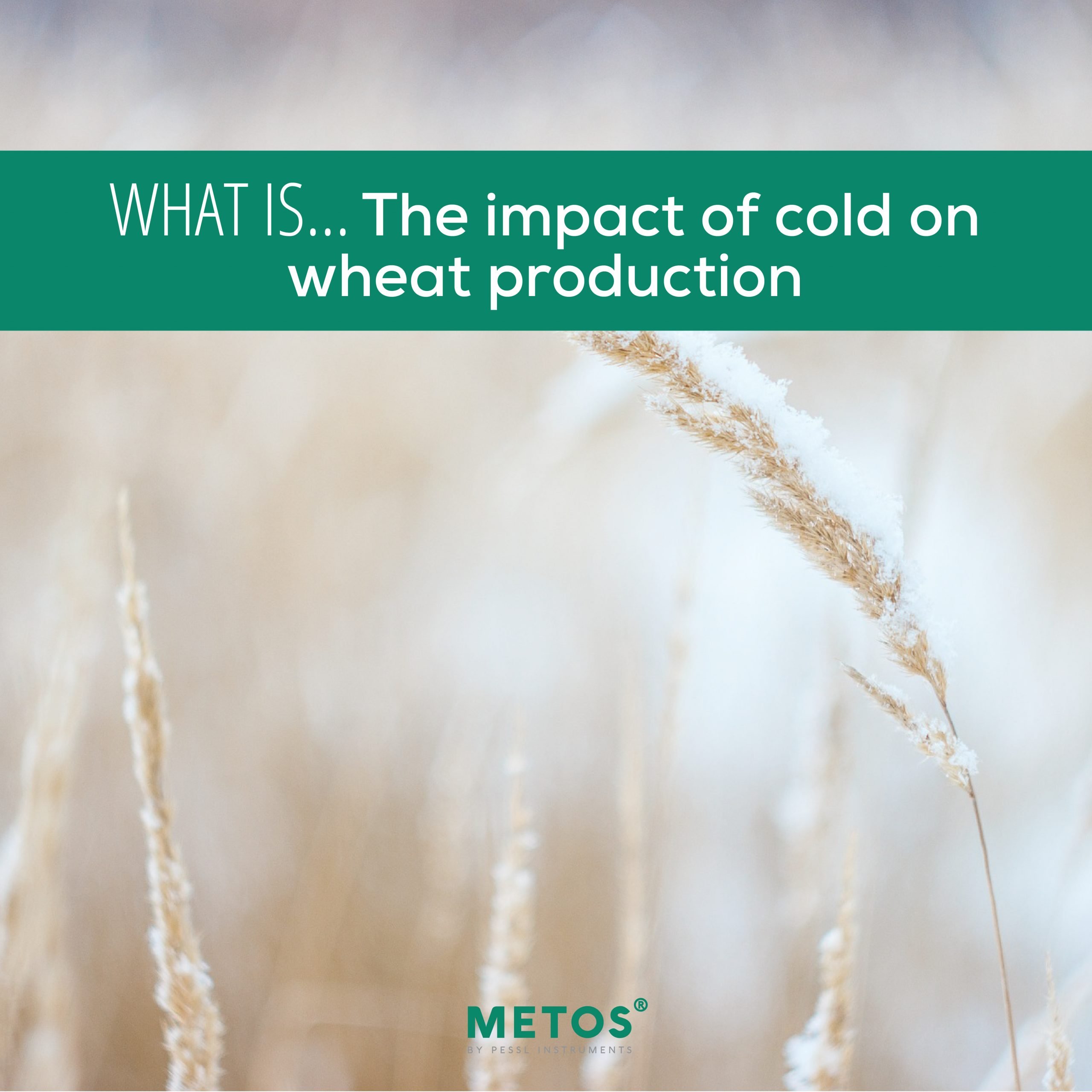La neige et le froid peuvent être bénéfiques pour la production de blé : la neige apporte de l'humidité au sol, tandis que le froid peut éliminer les maladies ou fournir une isolation aux températures très basses. Qu'est-ce que......
Qu'est-ce que... L'impact de la neige et du froid sur la production de blé
"Le changement climatique a déjà augmenté l'occurrence des événements de températures extrêmes, ce qui a limité la production et le développement du blé d'hiver." (Zheng et al., 2018)
En ce qui concerne la production de blé d'hiver, la neige et les températures froides peuvent être plus bénéfiques que la pluie à bien des égards, car sous la surface du sol, le gel peut aider à résoudre les problèmes de production.
Bien que la nature semble paisible, il se passe beaucoup de choses sous la surface du sol, d'un point de vue biologique. Et bien que nous ne puissions pas le voir, cela peut avoir une grande influence sur la production de blé au printemps suivant l'hiver.
Les avantages des températures froides et de la neige sur la production de blé d'hiver
Les températures froides peuvent éliminer de nombreux insectes et agents pathogènes nuisibles.
Le froid extrême et le sol gelé peuvent réduire le taux de survie de certains insectes, ce qui réduit la pression exercée par les insectes sur les cultures pendant la saison de croissance.
Si les températures de congélation ne sont pas atteintes pendant les mois d'hiver, les rendements peuvent être plus faibles, ce qui peut entraîner une hausse des prix des céréales en raison des problèmes de production.
La neige, c'est bien !
La neige peut agir comme une couche isolante pour les plantes, les protégeant contre le froid extrême. Lorsque la neige recouvre le sol, les plantes sont protégées à la fois des blessures dues au froid et de l'érosion par le vent.
En outre, le cycle de gel de l'eau aide à ramollir le sol et la neige fournit une certaine humidité au sol au printemps lorsqu'elle fond. En règle générale, 25 cm de neige équivalent à 2,5 cm ou 25 mm d'eau liquide (selon que la teneur en eau de la neige est faible ou élevée).
L'humidité favorise la croissance des racines du blé d'hiver.
Les racines continueront à pousser lentement à l'automne si l'humidité est suffisante, ce qui est important pour la survie de la plante pendant l'hiver. C'est à cette période que le blé d'hiver "s'endurcit" et détermine la capacité de survie et la santé de la culture. Les précipitations qui tombent sous forme de neige agissent également comme une couverture isolante, protégeant les racines du gel (un sol humide met plus de temps à geler qu'un sol sec).
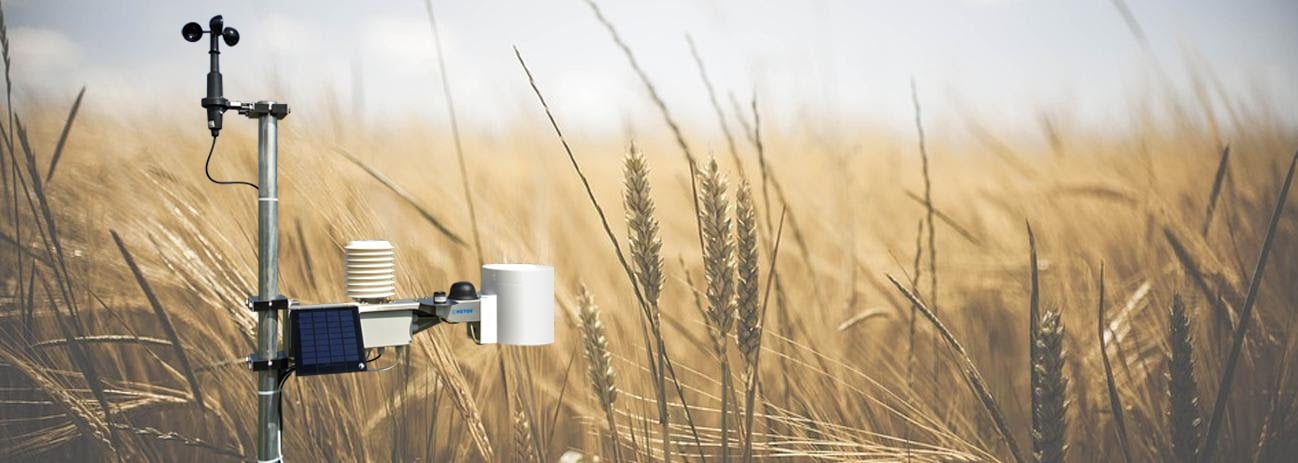
Le blé s'adapte à un large éventail de conditions d'humidité :
- Le blé pousse dans les régions où les précipitations sont comprises entre 250 et 1 750 mm.
- Une production optimale nécessite une source d'humidité adéquate tout au long de la saison.
- Le système racinaire peut atteindre jusqu'à 1,5 m de profondeur, selon le type de sol.
- 70 % de l'eau provient de la moitié supérieure du système racinaire.
- La consommation maximale est de 8 mm/jour pendant le développement du grain.
- Très tolérant au stress hydrique.
Mesurer - surveiller - gérer
La technologie dans l'agriculture ne peut fonctionner que si
- La biologie de la culture, les exigences climatiques et le potentiel des variétés sont connus,
- la biologie et la pression des ravageurs et des maladies sont connues,
- les conditions météorologiques sont connues et
- La qualité et le potentiel du sol sont connus.
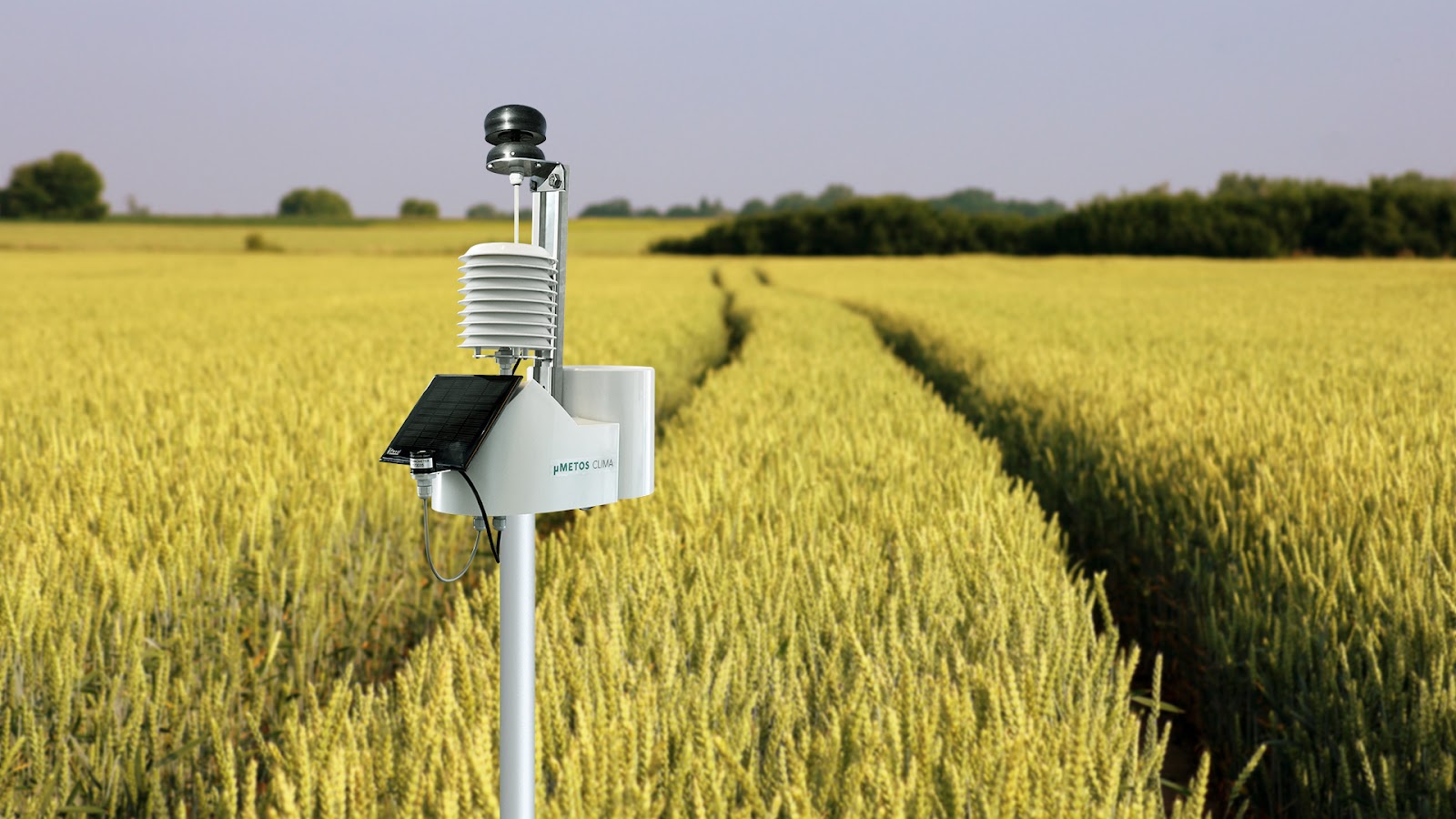
Système d'aide à la décision pour l'IdO
Les stations météorologiques et autres capteurs fournissent des données localisées, spécifiques à un site et exploitables pour la planification du travail. Il est donc essentiel de disposer de données météorologiques exactes, précises et fiables pour une gestion et une production réussies du blé.
Il est possible d'y parvenir avec une configuration parfaite des solutions IoT, car elles combinent l'observation permanente et les données météorologiques et pédologiques avec lesquelles vous serez en mesure de mettre pleinement en œuvre la gestion de la nutrition et de planifier l'irrigation et les applications chimiques (fertilisation & pulvérisation), et également de prévenir les pertes de récoltes dues à d'éventuelles maladies des plantes. Les dispositifs de surveillance à distance des champs fournissent les conditions de terrain, la croissance de la culture, le développement des mauvaises herbes, les phases phénologiques du développement des plantes, etc. dans différents champs et par conséquent vous aident à économiser de l'eau, de l'argent et du temps.
N'oubliez pas non plus de stocker correctement le blé (humidité et température), car l'aération et les températures froides réduisent la capacité de reproduction des insectes.
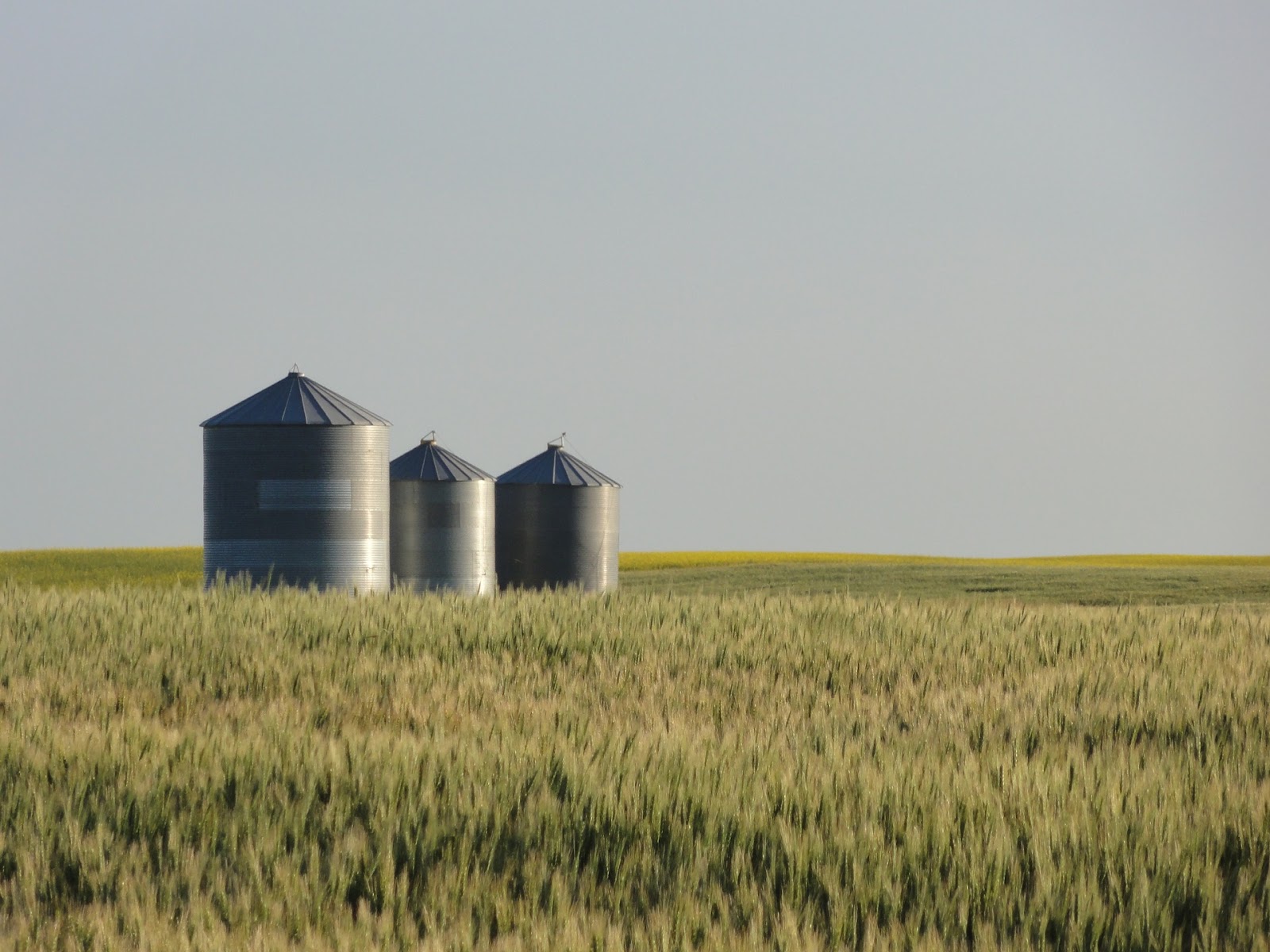
La littérature :
- Zheng, D., Yang, X., Mínguez, M. I., Mu, C., He, Q. et Wu X. (2018). Effet de la température et de la durée du gel sur la survie hivernale et le rendement en grains du blé d'hiver, Météorologie agricole et forestière, 260-261, 1-8. https://doi.org/10.1016/j.agrformet.2018.05.011
- Massey, J. (2018). Froid extrême : L'impact du froid sur l'agriculture, Climate Fieldview.
- Karki, D. (2021). Effets de la neige sur le bléSouth Dakota State University Extension.
- Watson, S. (2012). La neige peut être bénéfique pour les cultures de blé, Exploitation agricole réussie.
- METOS par Pessl Instruments. Cas d'utilisation.

